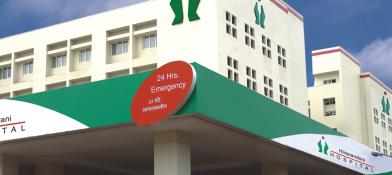Tilt table test
Overview
A tilt-table test is a simple, non-invasive diagnostic test that examines the cause of fainting due to unknown reasons. This test determines the cause of recurrent falls, light-headedness, fainting, and dizziness. It determines the source from which the repeated fainting is arising. During the test, the individual is subjected to stress which is exaggerated by medications to determine the cause of the syncope or fainting.
Syncope
Syncope is the medical term for fainting that occurs when the body cannot regulate the functioning of the heart and blood vessels. It arises due to a defect in the nervous system of the body or the hormonal system.
Principle of the test
A tilt-table test determines the cause of fainting when the cause is unknown. By strapping the individual to the table, the table is tilted. The table is moved from a lying down position to an upright position. This positional change is done to simulate the standing position and see the reaction of the body to it. Occasionally medications are given to create stress and provoke a response.
Purpose of the test
The main purpose of the tilt-table test is to identify the tendency of the body to fall to any drop in blood pressure. It may not exactly point to the cause of fainting but can identify if an individual is susceptible to a fall. It is a diagnostic tool to understand the reason for fainting when a standing-up position is simulated and observe the body's reaction.
Effects of Tilt-table test
During the tilt-table test, the individual is tilted to an upright position. When an individual is tilted, blood moves away from the central position of the body to the lower extremities like the legs and abdomen. This leads to decreased blood supply in the heart and central parts. This stimulates two important systems to maintain the blood pressure:
- nervous system-release chemicals
- activating systems of the body-release hormones
If these systems do not act then blood pressure decreases and unknown triggers can trigger blood vessel dilation and cause fainting.
Symptoms of fainting
Symptoms that warn an individual are sweating, blurring of vision, weakness, hearing loss, and nausea. Occasionally fainting can occur without any warning signs. During fainting, the individual’s eyes are usually open, may have jerk-like body movements, and may have uncontrolled peeing. This lasts for 20 seconds but may be prolonged if there is a long pause in the blood flow and pressure drops. Generally, individuals may experience a dream-like state and may not remember the fall. Some may have vomitings after 15-30 minutes. However, an individual can get up after 10-15 minutes.
Indications
The table-tilt test is indicated in the following conditions. They include:
- Frequent fainting for unknown reasons
- Fainting for unknown reasons with a trauma
- At least one fainting that occurs without any prior symptoms
- When there is a doubt of fainting occurring due to psychological factors
- Differentiate between fainting and seizures when there is an associated jerk-like movement
- Falls that mask the fainting
Contraindications
Not all individuals are indicated for this test. Contraindications include:
- Medical conditions like severe narrowing of the carotid artery
- A heart condition that increases the size of the heart called hypertrophic cardiomyopathy narrowing the outflow tract
- With a medical history of falls
- When the cause of fainting is known
- An individual with an unstable condition
The test procedure
The tilt-table test is done to understand the cause of fainting. All the medications taken by the individual should be informed to the HCP along with the history of previous falls. One should not eat at least 2 hours before the procedure to avoid vomiting and regurgitation of the food. One has to take their medications without fail unless advised by the HCP.
During the test, the individual is made to lie flat on a table. The table has a footboard and straps. These keep the individual in position without letting them fall off the table. Sticky patches are placed on the chest. These are called electrodes that are connected to an ECG machine. This monitors the heart rate and identifies when there is an abnormality. A cuff is tied to the arm to monitor the blood pressure. An IV line is connected to the blood vessel if there is a need to deliver the medicines.
There are two phases in this test.
- First phase: After lying flat on the table for 5 minutes, an individual is moved to a nearly vertical position where they remain there for about 40 minutes. The individual is moved at various angles such as 30 degrees, 45 degrees, and 70 degrees, and is kept in that position for a few minutes. One has to stay in this position and let the HCP know of any symptoms that may develop. If no fainting is seen during this time then they are proceeded to the next phase.
- Second phase: a medicine is given to provoke fainting. The table is tilted to 60 degrees. One will be in the same position for the next 15-20 minutes and monitored for any symptoms of fainting.
After the procedure
Once there is an event of fainting when held upright, the individual is brought back to the lying down position and monitored till they regain consciousness and their vitals stabilize. One can return to their daily activities after the test.
Interpretation
Fainting is the main factor that decides the tilt-table test. The tilt-table test is considered positive if an individual faints during the test due to a decrease in the blood pressure causing dizziness and fainting. It is considered negative if there are no signs of fainting with only a slight increase in the heart rate and no significant drop in blood pressure. Based on these test results, one may have to get more tests.
Risks and complications
There are no major risks and complications associated with this procedure except for prolonged weakness and low blood pressure that continue for a long time.
Conclusion
The table-tilt test is a diagnostic test done for fainting people. This test imitates the standing-up position and determines the potential cause of a fall due to a change in blood pressure. Based on the test results it helps to get a treatment plan or further investigations.































